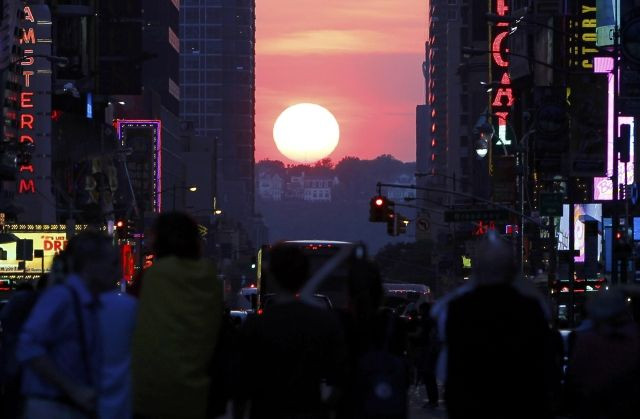
The summer solstice occurs when the tilt of the earth's semi-axis, in either the northern or the southern hemisphere, is most inclined towards the sun. This happens twice each year, at which times the sun reaches its highest position in the sky as seen from the north or the south pole.
Since we're in the northern hemisphere, mid-June is the date when we get to see the sun at its highest position, and today marks the "longest day of the year," because we're going to have the longest period of daylight.
Around the world, people celebrate the arrival of "midsummer" (another name given to the summer solstice), in many different ways. The June Solstice has been associated with many ancient summer traditions and continues to be celebrated in modern society.
Here are five things you need to know about the meaning of this celebration in the ancient cultures.
1) In ancient times, the date of the June solstice was an important source to help people manage their calendars and organize when to plant and harvest crops.
2) Stonehenge was built around 3100 BC. Some believe it was built to help establish when the summer solstice occurred. Interestingly, the sun rises at a particular point on the horizon as viewed from the centre of the stone circle on day of the June solstice.
3) In ancient China, the summer solstice was observed by a ceremony to celebrate the Earth, femininity, and the "yin" forces. It complemented the winter solstice that celebrated the heavens, masculinity and "yang" forces.
4) After Christianity spread in Europe and other parts of the world, many pagan customs were incorporated into the Christian religion. The "Midsummer" celebrations continued but were observed around the time of St John's Day, on June 24, to honor St John the Baptist instead of the pagan gods.
5) In North America, Native American tribes held ritual dances to honor the sun. The Sioux were known to hold one of the most spectacular rituals, where they cut and rose a tree that would be considered a visible connection between the heavens and Earth, and set up teepees in a circle to represent the cosmos. Participants couldn't drink or eat during the dance and their bodies were decorated in the symbolic colors of red, which represented sunset, blue, meaning sky, yellow, symbolizing lightning, white, corresponding to light, and black which meant night.
© 2025 Latin Times. All rights reserved. Do not reproduce without permission.





